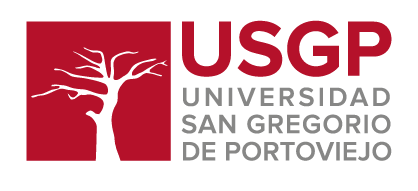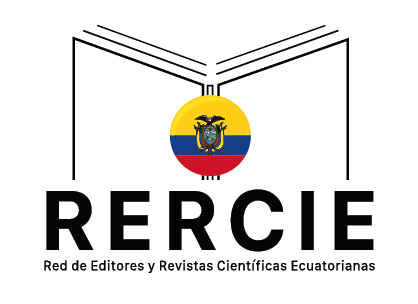Validación y adaptación cultural del instrumento perfil de impacto de la salud bucal en Ecuador
DOI:
https://doi.org/10.36097/rsan.v1i40.1384Palabras clave:
Calidad de vida, estudio de validación, salud bucal, encuesta y cuestionario.Resumen
La presente investigación tiene como objetivo validar y adaptar culturalmente el instrumento perfil de impacto de salud bucal en adultos ecuatorianos mayores a 40 años; a través de un estudio transversal y longitudinal tomando como referencia al instrumento de calidad de vida OHIP 14Mx. Se realizó en Quito, Ecuador, analizando variables socioculturales, clínicas y de autopercepción. Se tuvo una muestra de 150 personas, 68 hombres (45,3%) y 82 mujeres (54,7%); la edad promedio en hombres 59 años (±9) y mujeres 54 (±9). Se evaluó en la segunda prueba piloto la fiabilidad por dimensiones (mediana de 0,76 α de Cronbach), repetibilidad (0,99) y la estabilidad (0,99) para poder crear el OHIP 14Ec. La autopercepción de necesidad de tratamiento se pudo haber afectado ya que la totalidad de la muestra se captó en una clínica odontológica. La enfermedad periodontal (p= 0) y caries dental (p= 0,1) fueron las patologías más frecuentes. Por los resultados obtenidos del OHIP14Ec, se determina que es un instrumento confiable y repetible para su uso en adultos mayores a 40 años. Cumple las expectativas para evaluar la calidad de vida de los ecuatorianos
Citas
Ahmet, Karaman y Kutalmis, S. K. (2019). Evaluation of temporomandibular disorder symptoms and oral health-related quality of life in adolescent orthodontic patients with different dental malocclusions. CRANIO®, 1-9.
Bae, K. H., Kim, H. D., Jung, S. H., Park, D. Y., Kim, J. B., Paik, D. I., y Chung, S. C. (2007). Validation of the Korean version of the oral health impact profile among the Korean elderly. Community dentistry and oral epidemiology, 35(1), 73-79.
Bland M. (2000). Introduction to medical statistics. Third edition. New York: Oxford University Press.
Boljevic, T., Vukcevic, B., Pajic, S., y Pesic, Z. (2019). Oral health–related quality of life of patients undergoing different treatment of facial fractures: The OHIP-14 questionnaire. Nigerian journal of clinical practice, 22(9), 1213.
Castrejón R., y Borges A. 2012. Derivation of the short form of the Oral Health Impact Profile in Spanish (OHIP EE 14). Gerodontology. 29 (2), 155–58.
Castrejón, R. C., Borges, S. A., y Irigoyen, M. E. (2010). Validación de un instrumento para medir el efecto de la salud bucal en la calidad de vida de adultos mayores mexicanos. Revista panamericana de salud pública, 27, 321-329.
Cummins, RA (2005). Go from the concept of quality of life to a theory. Journal of Research on Intellectual Disability, 49 (10), 699-706.
Ferrans C. 1990. Quality of Life: Conceptual Issues. Seminars in On-cology Nursing. 6 (4), 248 – 54
GülbaharUstaoğlu, GöllerBulut, D., Gümüş, K. Ç., y Ankarali, H. (2019). Evaluation of the effects of different forms of periodontal diseases on quality of life with OHIP‐14 and SF‐36 questionnaires: A cross‐sectional study. International journal of dental hygiene, 17(4), 343-349.
Hattingh, A., De Bruyn, H. y Vandeweghe, S. (2019). A retrospective study on ultra-wide diameter dental implants for immediate molar replacement. Clinical Implant Dentistry and Related Research, 21 (5), 879-887.
John, M. T., Patrick, D. L., y Slade, G. D. (2002). The German version of the Oral Health Impact Profile–translation and psychometric properties. European journal of oral sciences, 110(6), 425-433.
Kushnir, D., Zusman, S. P., y Robinson, P. G. (2004). Validation of a Hebrew version of the oral health impact profile 14. Journal of public health dentistry, 64(2), 71-75.
Landry, R. G., y Jean, M. (2002). Periodontal Screening and Recording (PSR) Index: precursors, utility and limitations in a clinical setting. International dental journal, 52(1), 35-40.
Lauritsen, J. M., y Bruus, M. (2008). EpiData entry. A comprehensive tool for validated entry and documentation of data. Odense Denmark: The EpiData Association.
Lopez, R., y Baelum, V. (2006). Spanish version of the oral health impact profile (OHIP-Sp). BMC Oral Health, 6(1), 11.
Montero Martín, J., Bravo Pérez, M., Albaladejo Martínez, A., Hernández Martín, L. A., y Rosel Gallardo, E. (2009). Validation the oral health impact profile (OHIP-14sp) for adults in Spain.
Naoko S., Koyama, S., Mito, T., Izumita, K., Ishiko, R., Yamauchi, K., ... and Sasaki, K. (2019). Changes in quality of life related to oral health after oral rehabilitation with dental implants in patients after resection of a mandibular tumor. Journal of Oral Science, 61 (3), 406-411.
Newman M.,Takei H., KlokkevoldP.y Carranza F. (2003). Carranza Periodontología Clínica. 9na ed.: Amolca.
Oppermann, RV, Haas, AN, Rösing, CK y Susin, C. (2015). Epidemiology of periodontal diseases in adults in Latin America. Periodontics 2000, 67 (1), 13-33.
Organización Mundial de la Salud. Encuestas de Salud Buco-dental. Métodos Básicos. 4ed. Ginebra: World Health Organization, 1997. 67p
Pires, C. P. D. A. B., Ferraz, M. B., y Abreu, M. H. N. G. D. (2006). Translation into Brazilian Portuguese, cultural adaptation and validation of the oral health impact profile (OHIP-49). Brazilian oral research, 20(3), 263-268.
Rams T., Loesche W. 2017. Relationship between periodontal screening and recording index scores and need for periodontal access surgery. J Periodontol. 88 (10): 1042–1050
Rivas Ruiz, R., Moreno-Palacios, J., y Talavera, J. O. (2013). Investigación clínica XVI. Diferencias de medianas con la U de Mann-Whitney. Revista Médica del Instituto Mexicano del Seguro Social, 51(4), 414-419.
Slade G, Spencer J. 1994. Development and evaluation of the oral health impact profile. Community Dent Health. 11(1), 3–11.
Slade GD. 1997. Derivation and validation of a short-form oral health impact profile. Community Dent Oral Epidemiol. 25, 284–290.
Streiner, DL (2003). Starting at the beginning: an introduction to the alpha coefficient and internal consistency. Journal of Personality Assessment, 80 (1), 99-103.
Streiner, D. L., Norman, G. R., y Cairney, J. (2015). Health measurement scales: a practical guide to their development and use. Oxford University Press, USA.
Van Der Meulen, M. J., John, M. T., Naeije, M., y Lobbezoo, F. (2008). The Dutch version of the Oral Health Impact Profile (OHIP-NL): Translation, reliability and construct validity. BMC oral health, 8(1), 1-7.
Wong, M. C., Lo, E. C., y McMillan, A. S. (2002). Validation of a Chinese version of the oral health impact profile (OHIP). Community dentistry and oral epidemiology, 30(6), 423-430.
Yamazaki, M., Inukai, M., Baba, K., y John, M. T. (2007). Japanese version of the oral health impact profile (OHIP‐J). Journal of Oral Rehabilitation, 34(3), 159-168.
Descargas
Archivos adicionales
Publicado
Cómo citar
Número
Sección
Licencia
 Esta obra está bajo una Licencia Creative Commons Atribución-NoComercial-SinDerivadas 4.0 Internacional (CC BY-NC-ND 4.0).
Esta obra está bajo una Licencia Creative Commons Atribución-NoComercial-SinDerivadas 4.0 Internacional (CC BY-NC-ND 4.0).
















